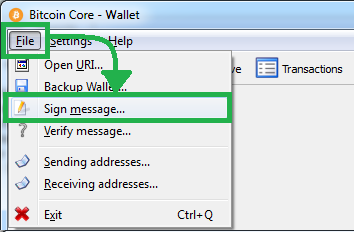In mid-2009, a strange programming engineer, working under the moniker Satoshi Nakamoto, delivered a product program that made bitcoin, the primary digital money. From that point forward, bitcoin has proceeded to acquire monstrous allure across the globe and motivate many other advanced monetary forms. The value of the bitcoin wallet exactly you will know when you have it.

A considerable lot of these cryptographic forms of money utilize advances that were at that point innate in Satoshi’s underlying project and idea. Others take the bitcoin show and adjust or endeavor to refine it.
Sometimes, bitcoin has brought forth varieties that depend on a similar fundamental idea and program yet that are particular from the first. In these circumstances, the bitcoin blockchain has gone through a cycle known as forking. With forking, the blockchain itself is partitioned into two particular substances. There have been many forks since bitcoin’s commencement, yet just some are feasible tasks.
It is through this forking system that different computerized monetary standards with names like bitcoin have been made. These incorporate Bitcoin Cash and Bitcoin Gold, among others. For the relaxed digital currency financial backer, it very well may be hard to differentiate between these cryptographic forms of money and to plan the different forks onto a course of events. Beneath, we’ll stroll through a significant number of the main forks to the bitcoin blockchain in recent years.
Understanding Bitcoin Hard Forks
In 2009, soon after delivering bitcoin, Satoshi mined the main square on the bitcoin blockchain.
This has come to be alluded to as the Genesis Block, as it addressed the establishment of digital money as far as we might be concerned. Satoshi had the option to roll out various improvements to the bitcoin network right off the bat in this cycle; this has become progressively troublesome and bitcoin’s client base has developed by a gigantic degree.
The way that nobody individual or gathering can decide when and how bitcoin ought to be overhauled has comparably made the most common way of refreshing the framework more perplexing. Soon after the Genesis Block, there have been a few hard forks.
During a hard fork, programming carrying out bitcoin and its mining techniques is redesigned; when a client updates their product, that form dismisses all exchanges from more seasoned programming, adequately making another part of the blockchain. Nonetheless, those clients who hold the old programming keep on handling exchanges, implying that there is an equal arrangement of exchanges occurring across two distinct chains.
A Timeline of Bitcoin Hard Forks
Bitcoin Unlimited
Bitcoin Unlimited has remained something of a mystery since its delivery in mid-2016. The undertaking’s designers delivered code yet didn’t determine which sort of fork it would require. Bitcoin Unlimited put itself aside by permitting diggers to settle on the size of their squares, with hubs and excavators restricting the size of squares they acknowledge, up to 16 megabytes.
Despite some waiting interest, bitcoin limitless has to a great extent neglected to acquire acknowledgment.
Bitcoin Cash
In light of Sewit, some bitcoin engineers and clients chose to start a hard fork to keep away from the convention refreshes it achieved. Bitcoin Cash was the consequence of this hard fork. It split off from the fundamental blockchain in August 2017, when Bitcoin Cash wallets dismissed bitcoin exchanges and squares.
